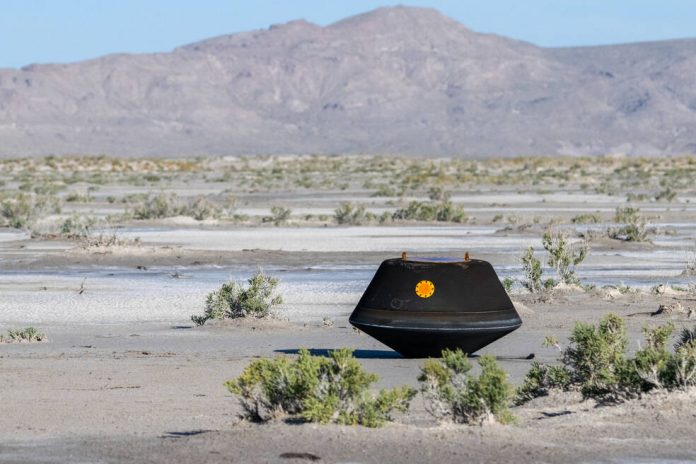Osiris-Rex mission unlocks solar system secrets from Bennu asteroid sample, with material shared for current research and preservation for the future
In the upcoming days, NASA researchers are set to unveil the contents of a capsule, carefully safeguarded, containing dust collected from the asteroid Bennu. This capsule successfully traversed the Earth’s atmosphere and landed softly in the western desert of Utah.
The unique surface of Bennu
Contained within is a modest amount of material, roughly around 250 grams. Despite its small quantity, scientists are optimistic that this treasure trove of asteroid dust holds the key to unravelling essential mysteries about the formation of planets. Additionally, it may shed light on the origins of organic molecules and water, which played a crucial role in the emergence of life on our planet Earth.
In 2020, the Osiris-Rex spacecraft executed a precision operation to gather dust from the asteroid Bennu using a smash and grab technique.
The history of Bennu
Bennu, an accumulation of various materials, came into existence during the early stages of the solar system’s development approximately 4.5 billion years ago.
This asteroid holds a unique status as a perfectly preserved time capsule. It has remained untouched by the extreme heat and pressure typically associated with the formation of planets and the effects of weathering that celestial bodies often undergo over time.
Meteorites frequently pummel the Earth, yet their chemical composition undergoes significant alterations as they blaze through the atmosphere.
The reasoning behind the spacecraft’s remarkable journey of over a billion miles through space is to procure an untainted specimen from Bennu.
Risk of significant destruction
This asteroid is recognised as the most dangerous celestial object within our solar system, bearing a one in 2,700 probability of colliding with Earth in the year 2182.
Measuring just under 1,640 feet (500 meters) in diameter, it possesses the potential to generate a crater spanning three miles (6 kilometres) wide and unleash an air-blast capable of levelling buildings across hundreds of square kilometres, as indicated by findings from the Imperial College’s ‘Earth impact’ program.
By scrutinising the composition of Bennu, scientists aim to gain insights into how to address this threat. They have already discovered that the asteroid’s surface is surprisingly soft, with the Osiris-Rex spacecraft sinking 50 centimetres into it before igniting its rockets, resulting in a flurry of debris.
The asteroid’s surface could function like the crumple zone of a car, making it more challenging to alter its course by employing a collision-based method.
The primary emphasis is on the capsule, securely stored in an exceptionally clean environment in Texas to safeguard it from any earthly contaminants.
After the capsule is unsealed, a specialised team will endeavour to extract initial findings and key insights from the collected dust sample.
Twenty-five per cent of the material will be allocated to scientists across the globe for in-depth investigations.
However, most of the contents will be carefully preserved for future generations. It is expected that in the future, scientists will possess advanced equipment and analytical methods that currently exist only in our imagination.











